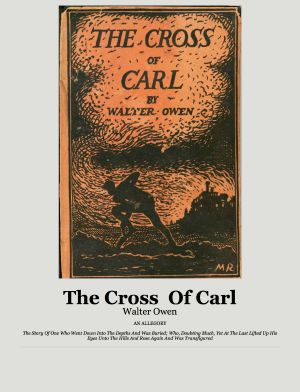The Cross of Carl

- Authors
- Owen, Walter
- Publisher
- Little, Brown, and Company, Boston
- Date
- 1931-01-01T00:00:00+00:00
- Size
- 1.42 MB
- Lang
- en
"An anti-war religious allegory, this is the story of Carl's first and last day of combat as a soldier in World War I. He can be identified from hints as a German, but his nationality is not the point here. Carl is presented as an Everyman and a Christ figure ('carl,' from the Old Norse for 'man,' meant 'peasant' or 'serf' in earlier periods of English). The four chapters of the book are named after the stages of the Passion: 'Gethsemane,' 'Golgotha,' 'Sepulture' and 'Resurrection.' In the first, he takes part in a dawn advance on 'Hill 50,' receives several wounds (all described, as are the wounds of nearby soldiers, with an almost nauseating vividness) and passes out in the enemy's trench. In the second, mistaken for a corpse, he is taken to a rendering plant where the remains of soldiers are ground up, boiled down in a giant vat and separated into useful products: pig food, oil, manure etc. Carl wakes up and barely manages to escape from this place. In the third section he wanders on the moor, his mind unhinged -- or, from a different point of view, purged of earthly restraints -- finds a broken shovel, digs his own grave and lies down in it. In the final section, two generals come upon him the following morning and listen to his visionary rambling, then shoot him as a dangerously subversive figure and put him back in his grave. The author's descriptions of horrors on the battlefield and in the rendering plant must have tested the limits of taste for his day. When he sticks to straightforward description, his story has a good deal of power, but he frequently coats the horrors with a heavy, honeyed prose that blurs their outlines. Still, a remarkable book for its graphic descriptions of mangled bodies and deranged souls, part of that small sub-genre of fiction (including, most notably, Machen's 'The Bowmen') that brings the supernatural and the military into close proximity. The author, in a clinical prefatory note, explains how the story came to him in 1917 in the course of visions, or hallucinations, while he was taking opiates for a physical ailment that kept him out of the war: a bi-location of his spirit enabled him to inhabit temporarily the body of a German soldier on the battlefield. Thus the book is also of relevance for those interested in automatic writing and drug-induced literature." - Robert Eldridge.